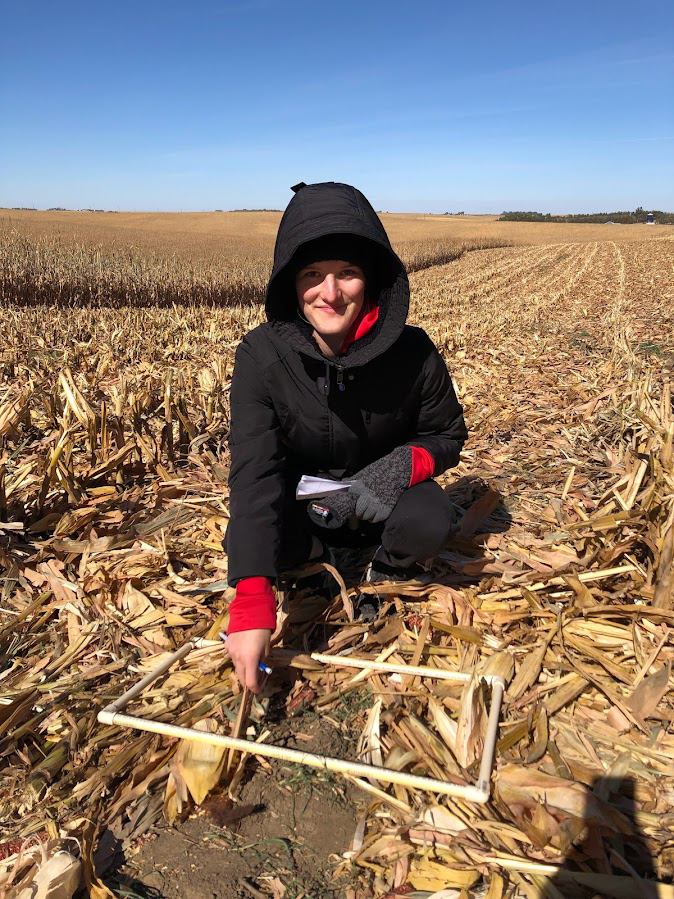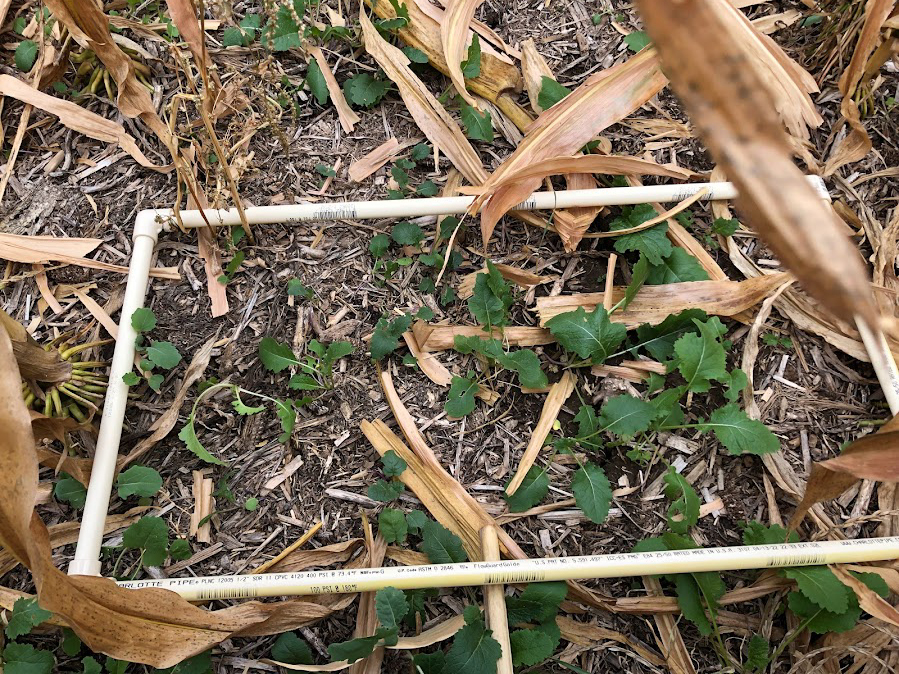Planting cover crops at the right time is a key driver of cover crop productivity. This August and September, aUniversity of Nebraska-Lincoln-led team tested establishment of cereal rye and a cover crop mix in 29 corn fields using a Highboy Interseeder. Read more about the project’s collaborators and goals
here.
As part of the project, we wanted to assess how well cover crops established using broadcast late-season interseeding. Broadcast seeds, especially without irrigation, usually have lower stand counts and more uneven stands than drilled seeds. We measured cover crop establishment by counting plants and calculating the percentage of dropped seeds that resulted in a plant.
In October 2022, we visited 19 of the 29 fields that were planted with the Highboy Interseeder. We took 10 random samples in each field. For each sample, we counted all cover crops growing within a 2-by-1-foot frame. We then calculated the percentage of seeds that emerged by dividing the number of plants with the pure, live cover crop seeding rate per square foot and multiplying by 100. An analysis of variance was then carried out to determine whether the rye and mix cover crops emerged at the same rate, what factor irrigation played in cover crop emergence, and whether stand counts varied between fields.

Taking a sample consists of counting all cover crops growing within a 2-by-1-foot frame laid perpendicular to the corn rows. SOURCE: University of Nebraska-Lincoln
The seven fields that were planted to cereal rye were all irrigated. Stand counts ranged from seven plants/sq ft to 21 plants/sq ft. Considering the seeding rate of 34 seeds/sq ft, which is equivalent to about 70 lb/ac, between 20 and 61% of seeds actually emerged. Is this a sufficient number of plants per square foot? This can be a tricky question to answer since cereal rye produces many tillers, often compensating for low stand counts. Next spring, we will measure how much biomass cereal rye produced in these fields and will correlate the biomass with fall stand counts.
The cover crop mix consisted of cereal rye planted at 29 seeds/sq ft (or 60 lb/ac), rapeseed planted at 11 seeds/sq ft (or 3 lb/ac) and purple-top turnip planted at 26 seeds/sq ft (or 7 lb/ac). Of the 12 fields planted to a cover crop mix, three were rainfed, one was sub-irrigated and eight were irrigated. Overall, there were 18 plants/sq ft, of which 12 were brassicas and six were cereal rye. On a percentage base, more brassicas emerged compared to cereal rye, possibly because brassicas’ smaller and round seeds make it easier to take up water for germination.

Brassicas (rapeseed and turnip) in a field on Oct. 12. SOURCE: University of Nebraska-Lincoln
In most fields, the cover crop emerged unevenly, where in some areas of a field almost 100% of the seed emerged and in other areas no plants were found. This is likely due to differences in corn growth, slopes, or possibly the broadcast equipment itself. The high variability in stand counts is probably also the reason why we did not see a statistically significant difference between the irrigated and the rainfed fields. Next year, we will collect more samples per field and sample more rainfed fields to reduce variability in our statistical analysis.
Broadcast interseeding cover crops in a drought year is a challenge. While we are cautiously optimistic about the overall emergence and stand counts, winter and early spring precipitation will determine cover crop productivity next spring.
Click here for more Industry News.






Post a comment
Report Abusive Comment